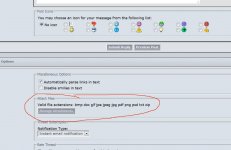Randy,
I have found that between 75 and 80 degrees is the optimum for me to apply my epoxy substrate and clear coat on my cues. On epoxy application, if it is over 80, things can get funny and by the time you get to the butt cap it is too hot from the chemical reaction at that specific parameter. I don't microwave my poly clear!!
With epoxy, if it is a little too hot after the microwave, I just lay the bottles on their side on the concrete floor and that works as a great heat sink to get to the proper temp. I would be lost without the instant infrared thermometer gizmo. It takes out all of the guess work and I can operate within my procedural guidelines without wasting time or any hassle.
I learned the hard way not to mess with guessing on temp of my chems. I would do a cue and get wonderful results and then a few months later do the same process and get dog shit results before I realized how important temp monitoring was concerning outcome in a four seasons climate that I live in. Too cold is what you really need to avoid as you have a problem later. Too hot will give you instant feedback because it sets up too fast while applying.
JMHO of coarse!
Rick
I have found that between 75 and 80 degrees is the optimum for me to apply my epoxy substrate and clear coat on my cues. On epoxy application, if it is over 80, things can get funny and by the time you get to the butt cap it is too hot from the chemical reaction at that specific parameter. I don't microwave my poly clear!!
With epoxy, if it is a little too hot after the microwave, I just lay the bottles on their side on the concrete floor and that works as a great heat sink to get to the proper temp. I would be lost without the instant infrared thermometer gizmo. It takes out all of the guess work and I can operate within my procedural guidelines without wasting time or any hassle.
I learned the hard way not to mess with guessing on temp of my chems. I would do a cue and get wonderful results and then a few months later do the same process and get dog shit results before I realized how important temp monitoring was concerning outcome in a four seasons climate that I live in. Too cold is what you really need to avoid as you have a problem later. Too hot will give you instant feedback because it sets up too fast while applying.
JMHO of coarse!
Rick
Last edited:
